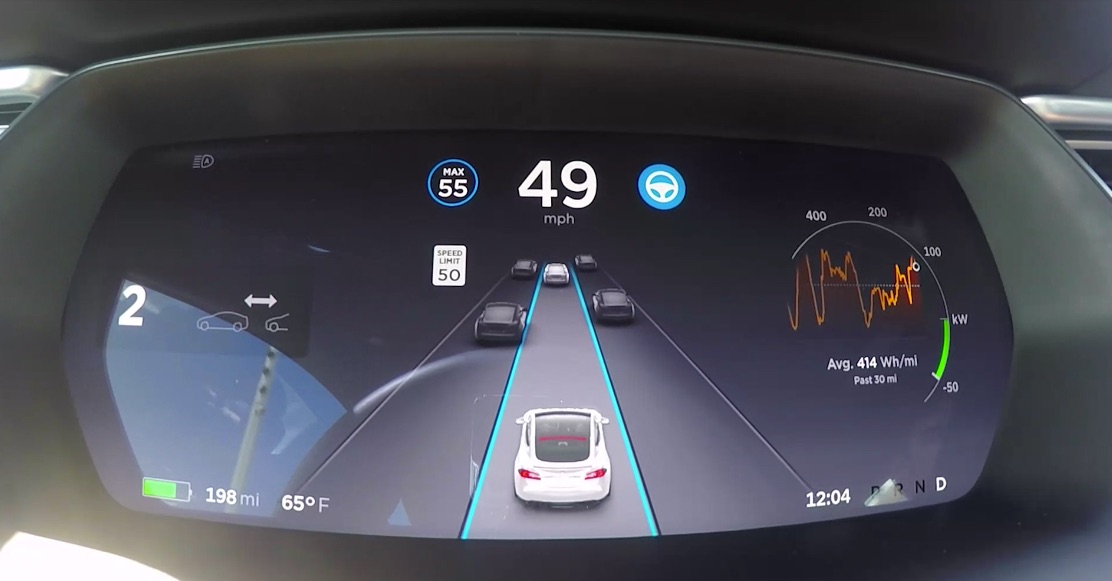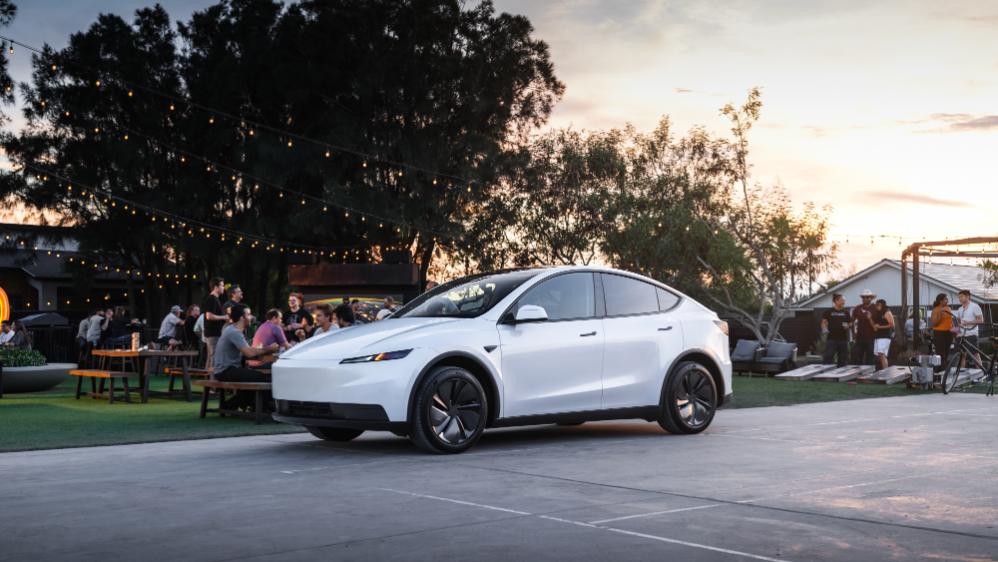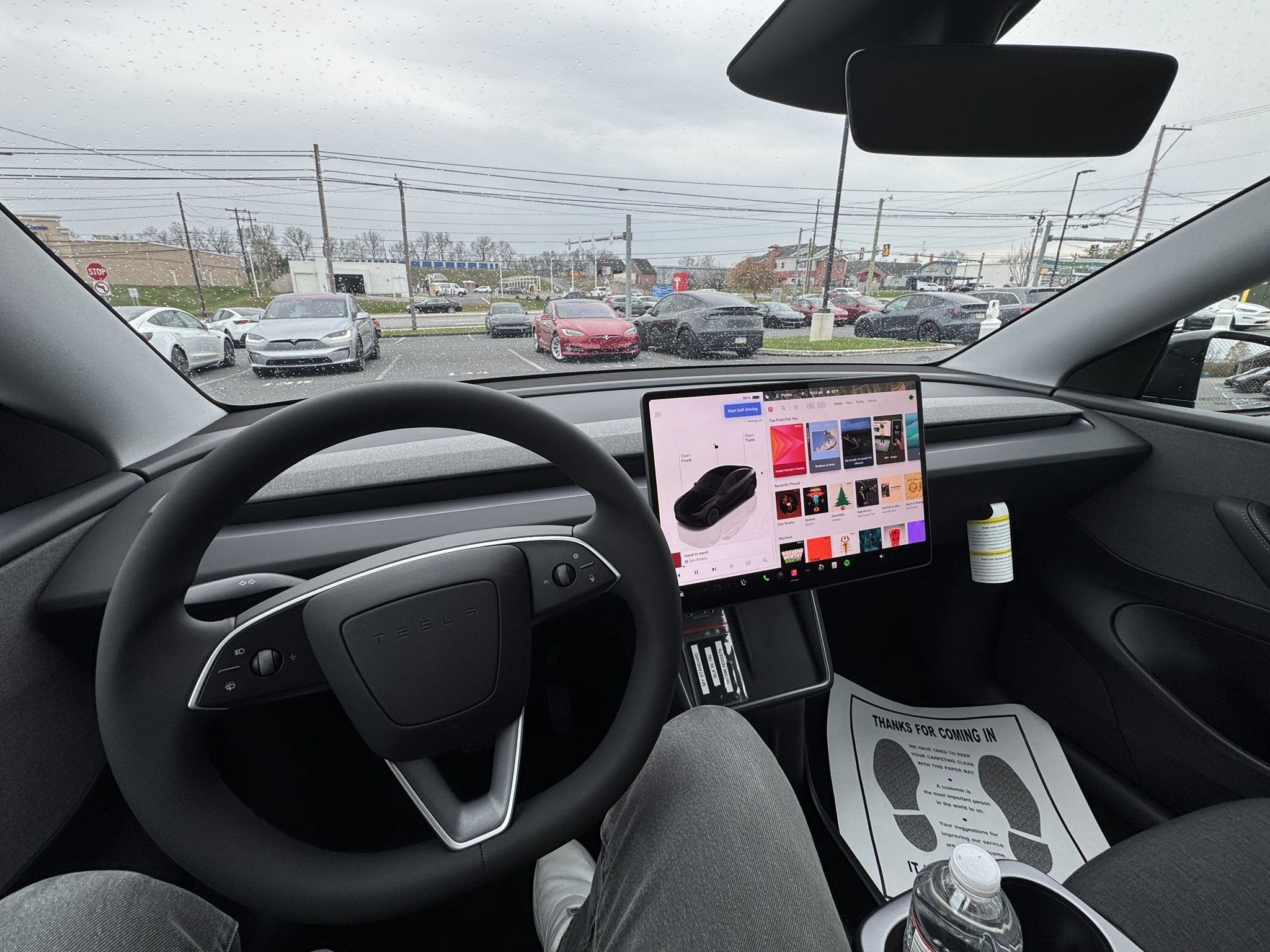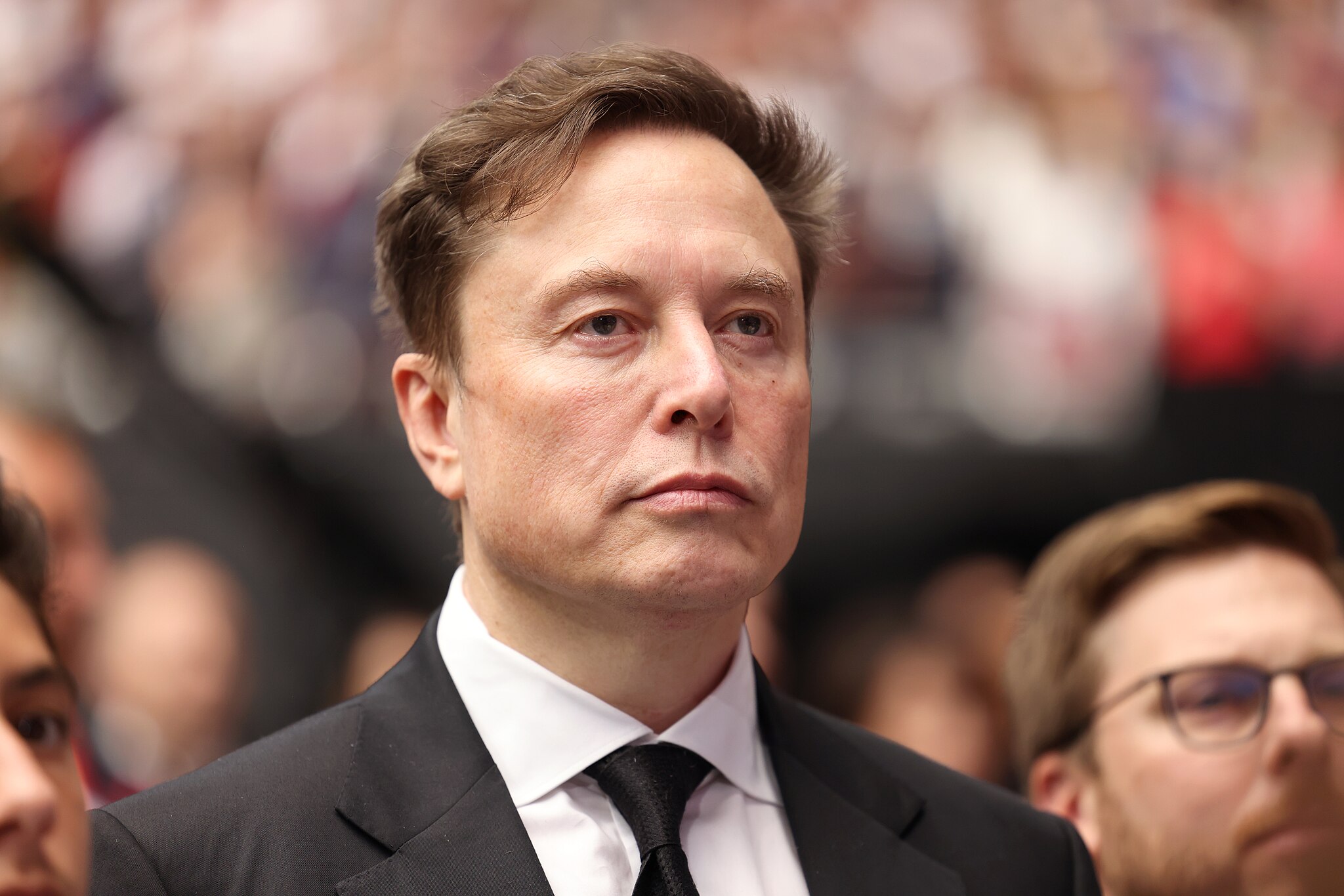News
Tesla Full Self-Driving could soon be allowed in Germany, gov approves legislation aimed at autonomous driving

The national Parliament of the Federal Republic of Germany decided on Thursday to change an existing traffic law that had prohibited vehicles from being engaged in autonomous mode. Drawing on votes from both the Social Democratic Party (SPD) and the Christian Democratic Union (CSU), the Bundestag has agreed to allow fully autonomous driving vehicles to travel on Germany’s streets. The (translated) law reads, in part,
“During vehicle driving, the driver may turn away from traffic and vehicle control by means of highly automated or fully automated driving function… [but must] immediately [assume control] if he recognizes that the conditions for the intended use of the highly or fully automated driving functions no longer exist… even if he does not control the vehicle in the context of the intended use of this function.”
The law provides a balance between driver responsibility in the event of traffic incident and the ability of the the driver to release control of the vehicle to a control system, depending on situation and duration. The driver must retain the capacity to reassume control as well as to deactivate the control system. All vehicles with autonomous driving systems would have a “black box” data storage system, which would assist in determining fault in the event of an accident.
The new German law supersedes the 1968 “Vienna Convention on Road Traffic,” which specified that human drivers must have full control over their vehicle at any time. Of course, at that time of that law’s implementation, autonomous vehicles had not yet been introduced.
Tensions were high immediately preceding the vote, according to Germany’s golem.de newspaper, which described the level of autonomy to be permitted as “highly automated and fully automatic vehicles.” SPD deputy Kirsten Lühmann accusing the body of assigning drivers the roles of “experimental rabbits for new technology.” Stephan Kühn, the Green party deputy, also disagreed with the extent of the law. “It is not enough just to formulate in the justification of the legal text what the driver is allowed to do without worry while the computer is driving the car. This must be re-written into the law itself.”
The SPD defended the amendments as sound and timely.
German Federal Minister of Transport Alexander Dobrindt (CSU) had offered draft legislation for the new law in February, but it received violent criticism and underwent significant revision, particularly around data protection regulations. At the beginning of this week’s debate, he envisioned Germany as having “the most modern road traffic law in the world.” Dobrindt has rationalized the law as providing value added software innovation that could be homegrown in Germany and Europe. With the new systems, he said, will come increased traffic safety, fewer traffic jams, and reduced environmental pollution [emphasis added].
Germany is a forerunner for European autonomous driving, with some sections of public highways already designated as live testing zones. The Institute for the German Economy calculates that Germany has registered 58% of all global patents in autonomous driving since 2010.
The approved revision states that the owner of the car is still liable for actions taken while under autonomous mode, as prescribed by section 7 of the Road Traffic Act (Hazard Liability). Specific German autonomous driving regulations have not yet been established; those will come alongside international regulations and definitions and will likely change, too, as technological development in autonomous driving continues to progress. Like so many in the auto industry today, German engineers, scientists, and regulators are in a race to figure out the details of how autonomous cars will function so that they can be market ready by the early 2020’s.
Of course, Elon Musk, Tesla’s CEO, has stated that his company’s electric vehicles will have autonomous capability by the second half of 2017. The Society of Automotive Engineers has identified different levels of autonomy, ranging from 0 to Level 5, with Level 5 signifying that a vehicle can drive itself at all times under all conditions and need no input from a human. Level 4 autonomy refers to a vehicle that can be autonomous almost all the time, within determined parameters, as seems to be outlined by the Bundestag.
Interestingly, according to Musk’s statements, Teslas may soon be able to approach Level 4. That would make Tesla R&D far ahead of any German innovation currently underway.
With a bicameral parliament, Germany has two chambers: the Bundestag (lower house) and the Bundesrat (Federal Council or upper house). Both chambers can initiate legislation, and most bills must be approved by both chambers, as well as the executive branch, before becoming law. Now that the autonomous driving legislation has been approved by the Bundestag, it will go before the Federal Council. Coalition forces feel confident that this week’s modifications to Dobrindt’s original draft proposal are sufficient to pass through the Bundestrat.
Bitkom CEO Bernhard Rohleder was excited about the law, saying, “The Bundestag has cleared the way for the Automnation Deutschland to be the world leader in autonomous driving.” He acknowledged that changes will occur around liability rules or the use of data. “But we must not make the mistake of trying to settle everything down to the end in a long-term debate, then other countries will create facts and we will have the opportunity to use this technology.”
The first production vehicles equipped with autonomous driving features will be introduced to Germany sometime in 2017. “We can also be innovative in the legal framework and do not need to hide from the Silicon Valley ,” said Ulrich Lange (CSU), a CSU member, argued during the final moments of debate.

News
Tesla Model Y Standard Full Review: Is it worth the lower price?

Tesla launched the Model Y Standard as an attempt to offer affordable electric vehicles to consumers now that the $7,500 EV tax credit is gone. We were able to spend four days with the car, and it was more than enough time to determine whether or not the car was worth the $9,000 discount compared to the Premium All-Wheel-Drive configuration, which is what I drive daily.
The Model Y Standard was stripped of some of the features that are present in the Premium trims of the Model Y: no glass roof, a sound system with roughly half the speakers, fewer acoustic-lined glass windows, less storage, and less functionality from an interior standpoint.
However, there are some real advantages to purchasing a Standard Model Y, and there are a handful of situations where this car would be well-suited.
Do I think it is worth the lower price? Well, I’ll get to that later in this article.
Initial Thoughts
In my first impressions review of the Model Y Standard, I talked about the face-value differences between my Model Y Premium and the new, more affordable trim. You will first notice the lack of storage between the front two seats, as the cupholder and additional storage bin sliding doors are void. You still get the cupholders, but they are exposed, which isn’t a huge deal, but it definitely takes away from the sleek look the Premium trim offers.
Additionally, the textile seats replace those of the vegan leather that is available in the upper-level trims. I mentioned previously that I could take or leave the vegan leather for the textile seats, as they are easy to clean, quick drying, and hide oils from your skin much better than leather does.

However, there comes one big sacrifice that I have been spoiled by, as the textile seats are not ventilated, so say goodbye to cooling your keister in the Summertime.
The lack of a glass roof is something many owners might not even notice. However, I have been spoiled by the glass roof in my car, and I look out of it every time I’m in my car. It is one of my favorite features, without a doubt. While it would not be a dealbreaker for me, it would be something I would miss terribly.
Things I Noticed After Several Days
Cabin Noise
One of the biggest things I noticed after the first two days in the Model Y Standard is that the cabin is much louder than the Premium. This is because Tesla did not acoustically line all of the glass in the Standard configuration, as it did in the Premium. The side windows are not treated, just the windshields. Therefore, you notice the noise level in the cabin is louder than in the Premium.
If you had not been driving in a Premium trim for a few months, you might not notice it. However, it is something that is a big sacrifice when moving to a different trim level, especially one that is less premium than what you might currently drive.

I have always been so shocked at how amazingly quiet the Premium trim’s cabin is; my Model Y is extremely peaceful, even when I’m sitting in bumper-to-bumper traffic, and people have modified mufflers and exhaust systems, tractor-trailers are going by, or crotchrockets are zipping by on the interstate.
This is a huge difference between the two cars, and it is something that is really hard to get used to. I know, first-world problems, right? But when you’re paying between $39,990 and $48,990 for a car, those little things truly do matter.
Stereo System Differences
Another thing I was very aware of was how weak the sound system is. I think if I had bought a Standard Model Y, I would have looked at having the speakers and subwoofers upgraded; I was almost disappointed in how much of a change it was between the two cars.
When I finally picked up my Model Y Premium on Friday (which had been detailed by the awesome team at Tesla Mechanicsburg), the first thing I did was crank up the volume and listen to some music. I really missed having a premium sound system.
Ride Quality
There are virtually no differences between the two cars in terms of ride quality. They are both extremely fun to drive, and the suspension in the Model Y Standard feels perhaps a little bit stiffer than the Premium. Regardless, I didn’t truly notice all that much of a change.
Driving this car around windy roads and tight turns was just as fun as my Model Y Premium. It was a blast to test out, and the slight change in feel was welcome. It’s always fun to drive new cars.
Performance
This is the first EV I’ve ever ridden in where I did not feel that awesome sensation of instant torque. It’s still a quick car, but it is missing that pep in its step that many of us have become accustomed to.
If you want to get someone’s true reaction to EV acceleration, let me just put it this way: This is not the car to do it in.
Some Little-Known Facts About the Model Y Standard
Most of us know that the Model Y Standard has a glass roof, but it is opaque, so even if you took out the headliner, you still would not see out of it. However, there is an interesting little tidbit from a Service perspective that does not make much sense.
If the Model Y glass roof cracks or is broken and needs to be replaced, Service is required to pull off the entire headliner and topside interior to access the glass. It cannot be replaced from the outside. In the Premium, because the glass is exposed, it is a much simpler process to replace the glass. This was an interesting thing I learned.
Additionally, the seat controls are only available on the center screen, which makes it difficult to adjust the seat if you are larger than the person who sat in the car previously. In order to adjust the seat, you’ll have to lean over the chair, access the controls from the screen, and adjust it manually before getting in.
Is the Tesla Model Y Standard Worth the Cheaper Price?
For an additional $9,000 to buy the Model Y Premium AWD, you would get a more capable powertrain, a quieter cabin, better performance, an upgraded interior, more storage, a better sound system, and more luxury features.
To me, the Standard is a car that seems extremely ideal for a teenager’s first vehicle (I got a $1,500 1998 VW Jetta K2 with 200,000 miles when I was 16), or a fleet vehicle. This would be the perfect car for salespeople to use: it does not have all the bells and whistles, it is efficient, and it is just what is needed to drive around to meetings.
For a personal car, it really depends on what you think you need. Admittedly, I’ve been spoiled by the Premium configuration, and personally, I wouldn’t go down to the Standard after owning a Premium trim.
News
Tesla’s new Holiday perk is timed perfectly to make FSD a household name
Tesla AI4 owners get FSD (Supervised) through Christmas, New Year’s Eve and well into the post-holiday travel season.

Tesla quietly rolled out a free Full Self-Driving (Supervised) trial for roughly 1.5 million HW4 owners in North America who never bought the package, and the timing could very well be genius.
As it turns out, the trial doesn’t end after 30 days. Instead, it expires January 8, 2026, meaning owners get FSD (Supervised) through Christmas, New Year’s Eve and well into the post-holiday travel season. This extended window positions the feature for maximum word-of-mouth exposure.
A clever holiday gift
Tesla watcher Sawyer Merritt first spotted the detail after multiple owners shared screenshots showing the trial expiring on January 8. He confirmed with affected users that none had active FSD subscriptions before the rollout. He also observed that Tesla never called the promotion a “30-day trial,” as the in-car message simply reads “You’re Getting FSD (Supervised) For the Holidays,” which technically runs until after the new year.
The roughly 40-day period covers peak family travel and gatherings, giving owners ample opportunity to showcase the latest FSD V14’s capabilities on highway trips, crowded parking lots and neighborhood drives. With relatives riding along, hands-off highway driving and automatic lane changes could become instant conversation starters.
Rave reviews for FSD V14 highlight demo potential
FSD has been receiving positive reviews from users as of late. Following the release of FSD v14.2.1, numerous owners praised the update for its smoothness and reliability. Tesla owner @LactoseLunatic called it a “huge leap forward from version 14.1.4,” praising extreme smoothness, snappy lane changes and assertive yet safe behavior that allows relaxed monitoring.
Another Tesla owner, @DevinOlsenn, drove 600 km without disengagements, noting his wife now defaults to FSD for daily use due to its refined feel. Sawyer Merritt also tested FSD V14.2.1 in snow on unplowed New Hampshire roads, and the system stayed extra cautious without hesitation. Longtime FSD tester Chuck Cook highlighted improved sign recognition in school zones, showing better dynamic awareness. These reports of fewer interventions and a more “sentient” drive could turn family passengers into advocates, fueling subscriptions come January.
Elon Musk
Elon Musk predicts AI and robotics could make work “optional” within 20 years
Speaking on entrepreneur Nikhil Kamath’s podcast, Musk predicted that machines will soon handle most forms of labor, leaving humans to work only if they choose to.

Elon Musk stated that rapid advances in artificial intelligence and robotics could make traditional work unnecessary within two decades.
Speaking on entrepreneur Nikhil Kamath’s podcast, Musk predicted that machines will soon handle most forms of labor, leaving humans to work only if they choose to.
Work as a “hobby”
During the discussion, Musk said the accelerating capability of AI systems and general-purpose robots will eventually cover all essential tasks, making human labor a choice rather than an economic requirement. “In less than 20 years, working will be optional. Working at all will be optional. Like a hobby,” Musk said.
When Kamath asked whether this future is driven by massive productivity growth, Musk agreed, noting that people will still be free to work if they enjoy the routine or the challenge. He compared future employment to home gardening, as it is something people can still do for personal satisfaction even if buying food from a store is far easier.
“Optional” work in the future
Elon Musk acknowledged the boldness of his claim and joked that people might look back in 20 years and say he was wrong. That being said, the CEO noted that such a scenario could even happen sooner than his prediction, at least if one were to consider the pace of the advancements in AI and robotics.
“Obviously people can play this back in 20 years and say, ‘Look, Elon made this ridiculous prediction and it’s not true,’ but I think it will turn out to be true, that in less than 20 years, maybe even as little as ten or 15 years, the advancements in AI and robotics will bring us to the point where working is optional,” Musk said.
Elon Musk’s comments echo his previous sentiments at Tesla’s 2025 Annual Shareholder Meeting, where he noted that Optimus could ultimately eliminate poverty. He also noted that robots like Optimus could eventually provide people worldwide with the best medical care.









